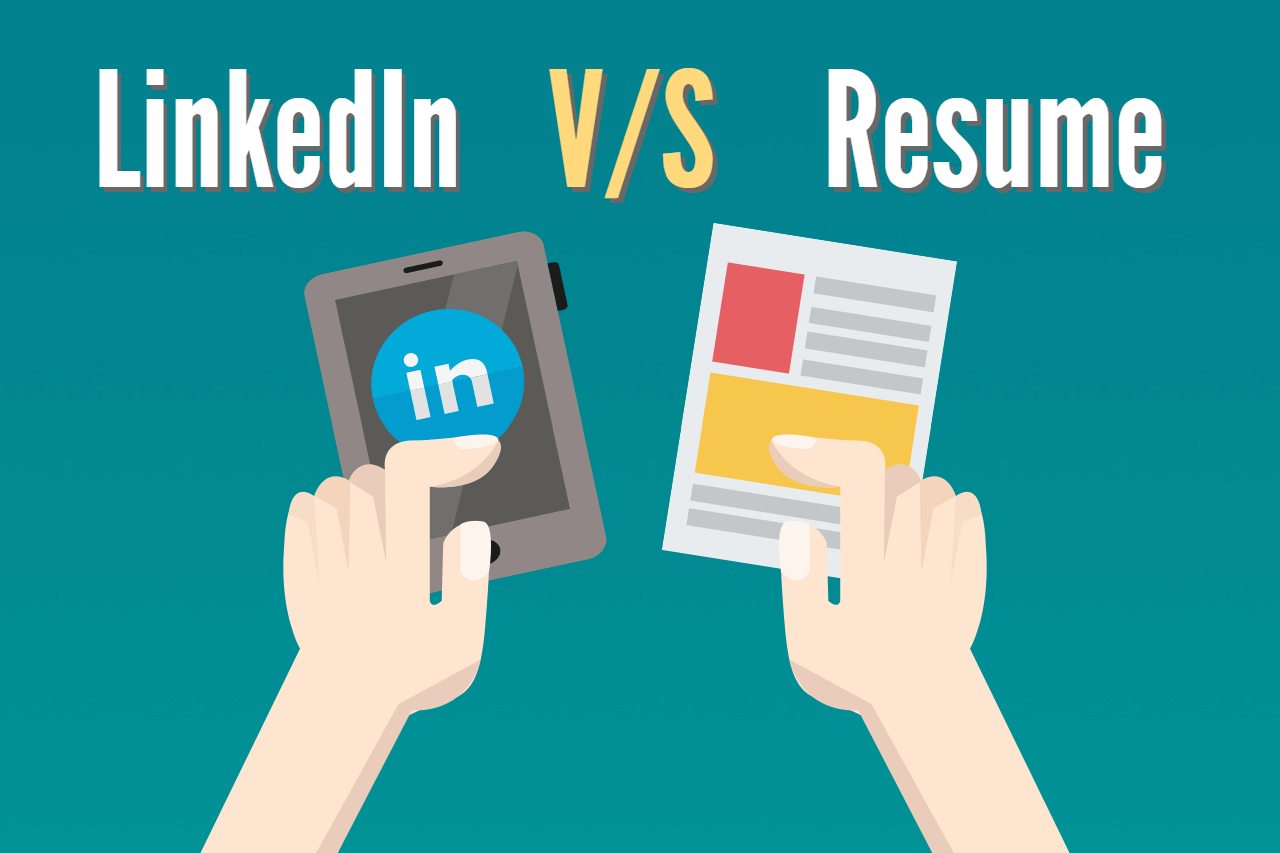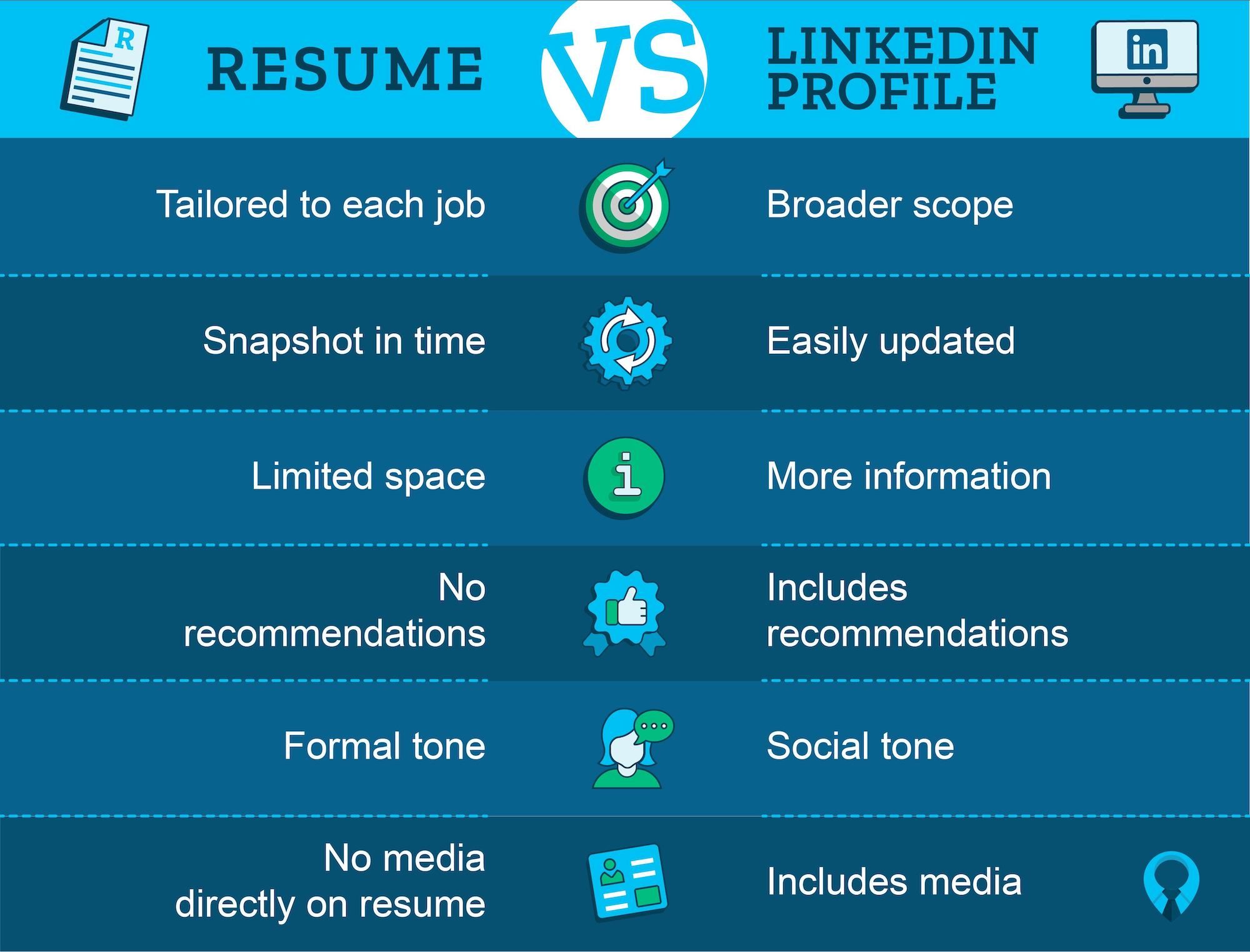Hey there! If you're diving into the job market or seeking new opportunities, you've probably heard about the importance of having a killer resume. But what about your LinkedIn profile? It’s crucial to ensure that both reflect the same professional narrative. They should work hand-in-hand to present a cohesive image to potential employers. Let’s explore why that consistency matters and how you can achieve it!
The Importance of Consistency

Having a consistent LinkedIn profile and resume is not just about aesthetics; it has real implications for your job search and professional reputation. Here’s why you should pay attention:
- First Impressions Count: When you apply for a job, your resume might be the first thing a recruiter sees. If they look you up on LinkedIn and find conflicting information, it could raise red flags. You want to present a unified front from the get-go.
- Builds Trust: Employers are looking for candidates they can trust. If your resume lists certain skills or experiences, it’s crucial that your LinkedIn profile backs that up. Consistency builds credibility and trustworthiness.
- Stronger Personal Brand: By ensuring that your resume and LinkedIn profile tell the same story, you enhance your personal brand. This means showcasing a clear narrative about who you are, what you do, and what you aspire to achieve.
- SEO Benefits: Search engines favor consistent information across platforms. Ensure your key skills and job titles are mirrored in both your resume and LinkedIn. This can help boost your profile in searches done by recruiters.
In this competitive job market, every detail counts. So take the time to align your LinkedIn profile and resume for maximum impact!
Aligning Your Professional Branding

When you're trying to create a strong professional presence, aligning your branding on both LinkedIn and your resume is absolutely crucial. Think of your LinkedIn profile as your online business card, while your resume reflects your work history in a structured format. Both should sing from the same songbook. Why is this alignment so important, you ask? Well, let's break it down!
- First Impressions Count: Hiring managers often check LinkedIn while reviewing resumes. A cohesive message across both platforms enhances your credibility.
- Consistency Builds Trust: When your LinkedIn and resume communicate the same values, skills, and experiences, it builds trust. Employers may wonder if you’re not being truthful if they see discrepancies.
- Enhanced Brand Recognition: Just like companies want their branding to be recognizable, you want potential employers to clearly understand your unique professional identity.
To align your branding effectively, focus on the following:
- Use a similar summary statement that captures your professional essence.
- Incorporate relevant keywords that reflect the skills you want to be known for.
- Display a uniform visual style—this could be through your profile photo or any visual elements in a digital resume.
In essence, take the time to ensure your online presence truly mirrors your professional narrative. By doing this, you're setting the stage for engagement and opportunities!
Key Elements to Match

Alright, let's dive into the nitty-gritty. To ensure that your LinkedIn profile and resume are singing in harmony, there are specific key elements you should match. Trust me, it’s less daunting than it sounds.
| Element | What to Do |
|---|---|
| Professional Headline | Use a consistent headline on LinkedIn that mirrors your resume's job title. |
| Summary Statement | Craft a compelling summary for both platforms that highlights your skills, experience, and career aspirations. |
| Job Titles | Ensure job titles are the same in both places—don’t use a fancy title on LinkedIn if your resume states something else. |
| Skills Section | List your top skills in both areas, ensuring you include industry-relevant keywords. |
| Accomplishments | Highlight significant achievements in the same way across both platforms. |
By carefully aligning these key elements, you reinforce your personal brand and create a seamless experience for anyone reviewing your professional credentials. Consistency is king, and this simple step can set you apart in a competitive job market!
Tips for Updating Your Profiles
Updating your LinkedIn profile and resume doesn't have to be a daunting task. Here are some practical tips to help you ensure they align wonderfully:
- Use the Same Job Titles: Make sure the job titles on your LinkedIn profile match those on your resume. This creates a clear connection between your experiences and helps potential employers recognize your career progression.
- Consistent Descriptions: When detailing your responsibilities and achievements, aim for consistency in language and phrasing across both platforms. This not only reduces confusion but also reinforces your personal brand.
- Update Regularly: Treat your LinkedIn profile as a dynamic entity. Whenever you have a new accomplishment or skill, update both your profile and resume at the same time to keep them in sync.
- Utilize Keywords: Research keywords related to your industry and incorporate them into your profiles. This will enhance your visibility in searches and ensure hiring managers see your most relevant skills.
- Tailor Each Document: While consistency is key, remember that your resume might need tailoring for each job application. Just ensure the core information remains the same on both platforms.
Keeping your profiles up to date not only helps you present a professional image but also enhances your chances of landing that dream job!
Common Mistakes to Avoid
When it comes to ensuring consistency between your LinkedIn profile and resume, there are a few pitfalls you want to steer clear of. Here’s a rundown of common mistakes:
| Common Mistakes | Impact |
|---|---|
| Outdated Information: Leaving old job titles or employment dates can create confusion. | Employers may question your attention to detail. |
| Using Different Formats: Having a different layout or style can be jarring. | It may confuse hiring managers who look for a cohesive professional image. |
| Inconsistent Skills: Highlighting different skills or endorsements on each platform. | It can muddy your professional narrative and make you appear unfocused. |
| Neglecting LinkedIn’s Features: Not utilizing sections like volunteer experience or certifications on LinkedIn. | Missed opportunities to showcase your full range of skills and passions! |
| Unprofessional Photos: Using different images, especially unprofessional ones. | It can detract from your professional credibility. |
Avoiding these mistakes will enhance the coherence and professionalism of your job applications, making you stand out in a competitive job market.
Ensuring Consistency Between Your LinkedIn Profile and Resume
In today's competitive job market, your LinkedIn profile and resume need to present a cohesive and consistent image of your professional identity. Both serve as critical tools in your job search, and any discrepancies between them can raise questions about your credibility, attention to detail, and professionalism. Here are some key areas to focus on to ensure your LinkedIn profile and resume align perfectly.
1. Personal Information
Always use the same name, job title, and contact information on both your LinkedIn profile and resume. Ensure that:
- Your name is presented consistently.
- Your job title reflects your current role accurately.
- Your contact details (phone number, email, etc.) are identical.
2. Employment History
Make sure that your work experience is accurately represented on both platforms. Key tips include:
- List the same companies, positions, and dates of employment.
- Provide consistent descriptions of your responsibilities and achievements.
3. Skills and Endorsements
Develop a clear set of skills that are relevant to your industry. Ensure both profiles reflect:
- Identical key skills and competencies.
- Any endorsements from colleagues on LinkedIn should align with your skill list.
4. Education
Double-check that your educational background is accurately presented. This includes:
- Institution names and locations.
- Degree(s) obtained and graduation dates.
5. Overall Tone and Style
Lastly, maintain a consistent tone and style across both documents. This will help convey your personal brand more effectively. For example:
- If your resume is formal, maintain that tone on LinkedIn.
- Use similar language in your descriptions and summaries.
To conclude, ensuring consistency between your LinkedIn profile and resume not only enhances your professional image but also instills confidence in potential employers about your qualifications and attention to detail. Taking the time to align these two critical components of your professional presence can significantly improve your job search prospects.
 admin
admin








